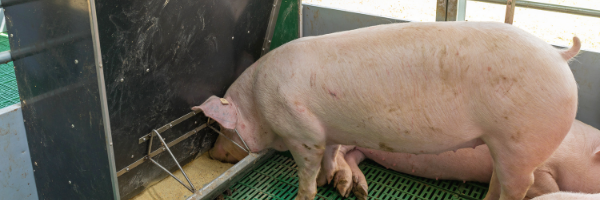For two years, the US pork supply chain has pulled all the levers to halt African Swine Fever [ASF] from reaching the homeland.
Their next unlikely enemy in maintaining the ASF-free status: organic soybean meal.
As boatloads of the crushed protein supplement hit US ports, the industry is nervous as ASF can survive within the feed ingredient during oceanic trips.
How we got here: During the PED virus in 2014, many worried the disease was spreading via swine feed. But at that time, international ingredient traceability was practically non-existent.
Fast forward to today and all soy-based products from China, Russia, and Ukraine are getting the side-eye.
With a mean holding time of 168 days in the feed, ASF could sneak itself into the feed supply chain and be disastrous. Mills could potentially mix and distribute the virus while trucks would criss-cross farms depositing feed. Super spreading at its finest.
It would get ugly, fast.
So one might ask: why not ban importing ingredients from ASF-positive countries?
Welp, that’s a no-go. Trade agreements won’t allow it even in the face of an industry-shattering risk.
The next best defense? Data.
Two swine gurus – Gilbert Patterson, chief medical officer of VetNOW, and Scott Dee, director of research at Pipestone Vet Services – have partnered up to attack the feed sourcing issue.
Using government and trade data, they built a tool to trace how and where feed ingredients enter the US. And while analyzing 325 Ports of Entry could be chaotic, the tool shifts focus only to ports where potentially contaminated feed is hitting the dock.
Plus, the team is advocating to mimic Canada, where product received from ASF-positive countries is siphoned to a separate holding area to wait out the virus’ life cycle. Only then does the ingredient get released into the animal food chain.
What’s at stake: An ASF outbreak in the US could cost the pork industry up to $50 billion over a decade. Pork exports would evaporate overnight and the entire protein space would experience depressed prices. Furthermore, US grains would get smacked too. There’s no room for error. The focus on feed will continue long into 2021.

